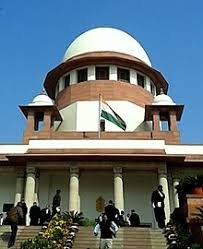This case involves a complex issue regarding the status of lands known as “Zudpi Jungle” or “Zudpi Forest” across six districts in the Eastern Vidarbha Region of Maharashtra: Nagpur, Wardha, Bhandara, Gondia, Chandrapur, and Gadchiroli2. The State of Maharashtra stated that while these lands were recorded as “Zudpi Forest” in revenue records, they were historically not forest lands and had been used for decades for non-forestry purposes, including residential areas, agriculture, government offices, public schools, and primary health centres. The term “Zudpi” itself is a Marathi word meaning “Bushes/Shrubs,” referring to unoccupied lands with bushy growth3. Various committees, including the Central Empowered Committee (CEC) and a High Powered Committee (HPC), were constituted to examine and report on these lands. The issue also involves widespread unauthorised occupation and illegal diversion of these lands.
Law Involved The primary legal frameworks relevant to this judgment are:
- The Forest (Conservation) Act, 1980 (FC Act, 1980): This Act is central to the dispute, particularly its provisions restricting the dereservation of forests and the use of forest land for non-forest purposes. The definition of “forest” under this Act is a key interpretational challenge.
- The Central Province Grazing and Nistar Act, 1948: This Act defined “Scrub Jungle” and governed the customary rights of grazing cattle and collecting jungle produce.
- The Indian Forest Act, 1927: Some lands in question were notified as “Forest” under this earlier Act.
- The Constitution of India: The judgment extensively discusses the inter-relationship between Directive Principles of State Policy (DPSP) and Fundamental Rights, particularly concerning social and economic justice…. Specific fundamental rights like the Right to Shelter (derived from Article 19(1)(e))… and the Right to Livelihood are examined in the context of the populations residing on these lands. The principle of Sustainable Development, balancing environmental protection with development needs, is also invoked.
Reasoning:
The Supreme Court considered the various reports from committees like the CEC and HPC, which presented different classifications and recommendations for the Zudpi lands6…. A core part of the reasoning revolves around determining whether these lands, despite their historical revenue records, actually fall under the statutory definition of “forest” as per the FC Act, 1980. The Court noted that not accepting the recommendations of the CEC, which aimed to balance forest protection with social needs, could have a “devastating effect” leading to the dishousing of lakhs of people who have resided on these lands for decades.
The Court emphasised the need to balance environmental concerns with the social and economic justice requirements, acknowledging the right to shelter and livelihood of the citizens affected by the land’s classification. The complex history of land management, including a “bureaucratic mess” caused by State reorganisation, was also a factor26. The CEC’s recommendations generally proposed allowing the diversion of certain Zudpi lands for non-forestry use, provided there was compensatory afforestation and payment of Net Present Value (NPV) to mitigate environmental impact. The Court also highlighted the importance of prompt action and feedback on encroachment complaints.
Holding:
While the provided excerpts do not contain the complete final order or a definitive “holding” in the traditional sense, they outline the approach and types of directions being issued in this ongoing matter. The Court has directed various authorities in line with previous orders and committee recommendations, broadly aiming to:
- Ensure that Zudpi Jungle lands are considered “Forest lands” in line with prior Court orders [138(i), 90(ii)].
- Direct the State of Maharashtra to submit consolidated proposals for each district for the diversion of Zudpi Jungle land for non-forestry activities [90(iii)].
- Direct the Union Government to consider and approve these proposals, subject to conditions such as compensatory afforestation and depositing Net Present Value (NPV) levies [91(iv), 91(v)].
- Require the State of Maharashtra to declare unallotted “fragmented land parcels” as “Protected Forests” under the Indian Forest Act, 1927 [92(vii)].
- Direct the constitution of Special Task Forces comprising Sub-Divisional Magistrates, Deputy Superintendents of Police, Assistant Conservators of Forests, and Taluka Inspectors of Land Revenue to remove encroachments within a specified period and post these officials for this purpose only [93(ix), 80, 121].
- Direct the Revenue Department of the State of Maharashtra to hand over possession of the remaining Zudpi Jungle lands to the Forest Department for afforestation and green coverage [93(xi), 87].
- The Court noted that it would further reiterate its directions regarding the various parcels of land notified as forest lands and those still in possession of the Revenue Department.
- The amicus curiae will continue to assist the Court, and compliance affidavits are expected.
In Re: Zudpi Jungle Lands
Supreme Court: 2025 INSC 754: (DoJ 22-05-2025)








